Axolotl Care Sheet
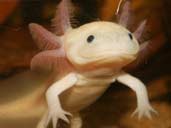 |
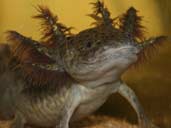 |
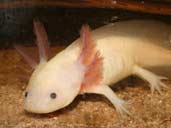 |
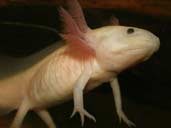 |
Common name: Axolotl or Mexican Walking Fish.
Scientific name: Ambystoma mexicanum
The name Axolotl is derived from the Aztec Language of Nahuatl. There are a few different translations of the name Axolotl, but some of the most popular translations are ‘Water Dog’, 'Water Doll', 'Water Slave' and ‘Servant of the water’. The name also has connections with the Aztec God Xolotl, who is believed to have turned into an Axolotl in Aztec mythology.
Axolotls are part of the Ambystoma family, which means they are closely related to Tiger Salamanders and in the Caudata classification of amphibians.
Description
Description: There are 5 different colour variations in Axolotls. The wild types are either olive green to dark grey or brown, whilst the black, albino and leucistic (golden coloured) Axolotls are more typically found in the pet trade.
All Axolotls keep their larval appearance throughout their lives and have 3 noticeable gills branching out from either side of their neck area. These gills have a feathery appearance.
Axolotls also have four lizard like legs and a long, flat tail.
Size: Axolotls can grow up to 25-30cm (10 – 12 inches).
Life span: Axolotls can live up to 15 years with appropriate care, but average at about 10 years generally.
Origin: Mexico. The only place that they can be found in the wild is in the canals of the former Xochimilcho Lake, where they are now considered to be an endangered species. They were originally also found in Lake Chalco in Mexico, but this lake has since been drained and Axolotls can no longer be found there.
Habitat: Axolotls are a fully aquatic species that appreciate heavily vegetated waters and freshwater lakes at high altitudes. They prefer cool water, as the water from the lake of their origin is glacier fed and cool throughout the year.
Interesting Facts about the Axolotl
The Axolotl’s life cycle is a rare phenomenon as they live their entire lives in the Larval stage, yet still manage to breed. This is called Neotony. It is believed that they have evolved to be this way due to low levels of iodine in their native waters. Experiments have been done and Axolotls will metamorphose when exposed to iodine, and they develop into salamanders that look similar to the closely related Tiger Salamander.
Axolotls have excellent regenerative abilities and can regrow limbs, tails and even heart and brain cells at an outstanding rate. This has made them a popular focus in scientific research.
Axolotls were once a part of the staple diet of the ancient Aztec people and can still be bought in modern Mexico as a food item. They were also used in some Aztec medicines.
Things to consider before purchasing your first Amphibian
• Who will look after your new pet if you are away?
• Can you obtain its food easily from your local pet shop?
• Would you be comfortable feeding live insects as food?
• Are you comfortable having live food in the house to feed your pet?
• Is the rest of the family happy to live with an amphibian?
Captive Care
Temperament: Axolotls are great first amphibians for beginners, because they are relatively easy to care for. They are also a very hardy species, so it is unlikely that your pet will become ill.
The only thing to worry about with Axolotls is their predatory tendencies. They will generally eat smaller tank mates, and will even eat the limbs of other Axolotls even if similar sized. It advised to keep your Axolotl singly to avoid this, even if the limbs will grow back eventually.
Some people may say that it is ok to keep Axolotls with aquarium fish, but this is not advised. Not only is there a chance that the Axolotl may eat the fish, the fish may also try to eat your Axolotls gills causing damage to your Axolotl.
Housing
An Aquarium will be needed to house your Axolotl as they are entirely aquatic.
They are quite an active species so the bigger the aquarium you can provide the better. The aquarium should be fitted with a tight fitting lid, as they are prone to try and escape from their enclosures. Axolotls are not adapted to live on land, so will dehydrate and die quickly if they escape and are not placed back in the water in time.
The bottom of the tank may be lined with an aquarium gravel substrate, but larger gravel is more appropriate than smaller grains to avoid your Axolotl from accidently ingesting some of the gravel. Sand, pebbles, marbles and large rocks can also be used.
Your aquarium should contain:
Water
The entire aquarium should be dedicated to providing adequate water for your Axolotl. The water should be at a depth of approximately 25- 30cm (10 -12 inches).
Change the water daily to avoid the build up of bacteria, unless a gentle filter can be provided to keep the water clean. Axolotls appreciate a low flow filter as they can become stressed if the flow of the filter is too strong or powerful. With a filter it should only be necessary to change one third of the water every week.
De-chlorinated or bottled spring water should always be used as Axolotl are really sensitive to various chemicals and cannot handle water with chlorine and chloramines in.
Water should be kept at a PH level of around 7. PH should be checked after each major water change to ensure that a similar PH is always maintained.
A place for your Axolotl to hide
All amphibians require somewhere to hide and may become stressed if this is not provided. This could be a plant pot on its side, which is low cost but easily cleaned if it becomes soiled.
Bogwood, logs, stones and cork bark make good natural looking additions to your aquarium and make great hiding places. Ornaments commonly sold for aquariums are also welcome additions, as they will look good and provide more places for your Axolotl to hide.
Live plants can be used in your aquarium, but Axolotls are known to sometimes get their gills entangled in some plants so care should be taken when choosing plants for the aquarium.
A change of scenery
Axolotl are very inquisitive animals and like to explore new surroundings. Once in a while change the layout of the aquarium. This will keep your Axolotl from becoming bored. You will notice once you put your Axolotl back in the tank it will start to re-explore its new surroundings.
Heat
The ideal water temperature for your Axolotl is a temperature gradient of 10-20°C (50-68°F). This is generally around room temperature so no additional heating should be required.
Prolonged exposure to temperatures above 23°C can cause your Axolotl to suffer from heat stress, so measures need to be taken if you can not maintain temperatures below this.
It's useful to have a small thermometer on either end of the aquarium to check the water temperature.
Feeding
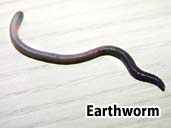 |
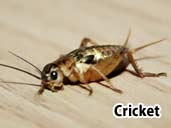 |
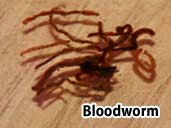 |
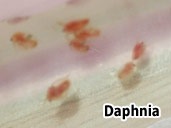 |
Axolotls are carnivorous and should be fed every 3-4 days with a varied diet of appropriately sized prey items, such as bloodworms, earthworms, crickets, blackworms, whiteworms, lean meat, small pieces of shrimp, daphnia, mosquito larvae, very small snails and appropriately sized fish pellets. Feed just as much as they can comfortably eat within 10 minutes.
Lighting
Axolotl should be kept out of direct sunlight as they have sensitive eyes and do not like bright lights. Aquarium lights are also not recommended. Natural sunlight should suffice.
Cleaning
Your Axolotl’s aquarium should be inspected daily. Every month (or more frequently if a filter is not used) clean out the tank completely and sterilise using a reptile/amphibian friendly disinfectant. The water needs to be emptied, cleaned and refreshed with fresh de-chlorinated water. Sterilise any décor to replace when the tank has been cleaned. Thorough rinsing is required to ensure that no chemical residue remains on the items to be replaced.
Your Axolotl should be moved to a temporary tank whilst being cleaned.
Handling
Axolotls do not like being handled and handling should be avoided.
An aquarium net can be used to move your Axolotls safely to another tank during cleaning, but care must be taken to ensure that you do not damage their delicate gills whilst doing so.
Sexing
Juvenile Axolotls are difficult to sex accurately, but the sex of your Axolotl may become more distinguishable at around 2 years of age.
The male Axolotl has a longer, but narrower head than the female. There will also be swelling of the cloaca.
Breeding
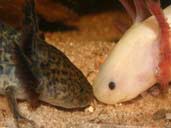 Axolotls are neotenic and spend their entire lives in the larval stage. This means they can breed without changing to a typical adult salamander form through metamorphosis. Despite this, should not be bred until they reach the age of 18 months to ensure they are the appropriate size and maturity.
Axolotls are neotenic and spend their entire lives in the larval stage. This means they can breed without changing to a typical adult salamander form through metamorphosis. Despite this, should not be bred until they reach the age of 18 months to ensure they are the appropriate size and maturity.
The breeding season in the wild for Axolotls is usually around winter to spring, but it is possible for a female to lay eggs every 4- 6 months. This is not necessarily healthy though, so it is advised to only breed your females once a year.
Axolotls can sometimes be encouraged to breed by reducing the daylight hours they are exposed to for a few weeks beforehand.
300-600 eggs can be spawned, and these tend to be deposited on plants. These eggs should be separated from the adults soon after spawning to avoid the possibility that the eggs will be eaten.
The eggs need to be kept at 20°C (68°F) in aerated water, so a pump and air stone will be necessary. Larvae will hatch within 2- 3 weeks.
They will require their first feed around 24 hours after they hatch. Feed the larvae daily on daphnia, white worms and bloodworm
Larvae can be cannibalistic so separate them into individual containers if possible. If not, ensure that they have plenty of room so cannibalism can be avoided.
As the larvae become juveniles you can increase the variety of food substances that may be fed to your Axolotls. Chopped up earthworms and bloodworm are a good choice to begin their transition onto larger prey items.
We are currently creating a day-to-day hatch and growth diary of our Axolotl Spawn on the forum CLICK HERE TO HAVE A LOOK
Other questions about the Axolotl
If you have any other questions why not join The Amphibian Forum and ask one of the many experienced keepers. The reason this website was set up was so people in the amphibian keeping hobby could share their experiences with others.

